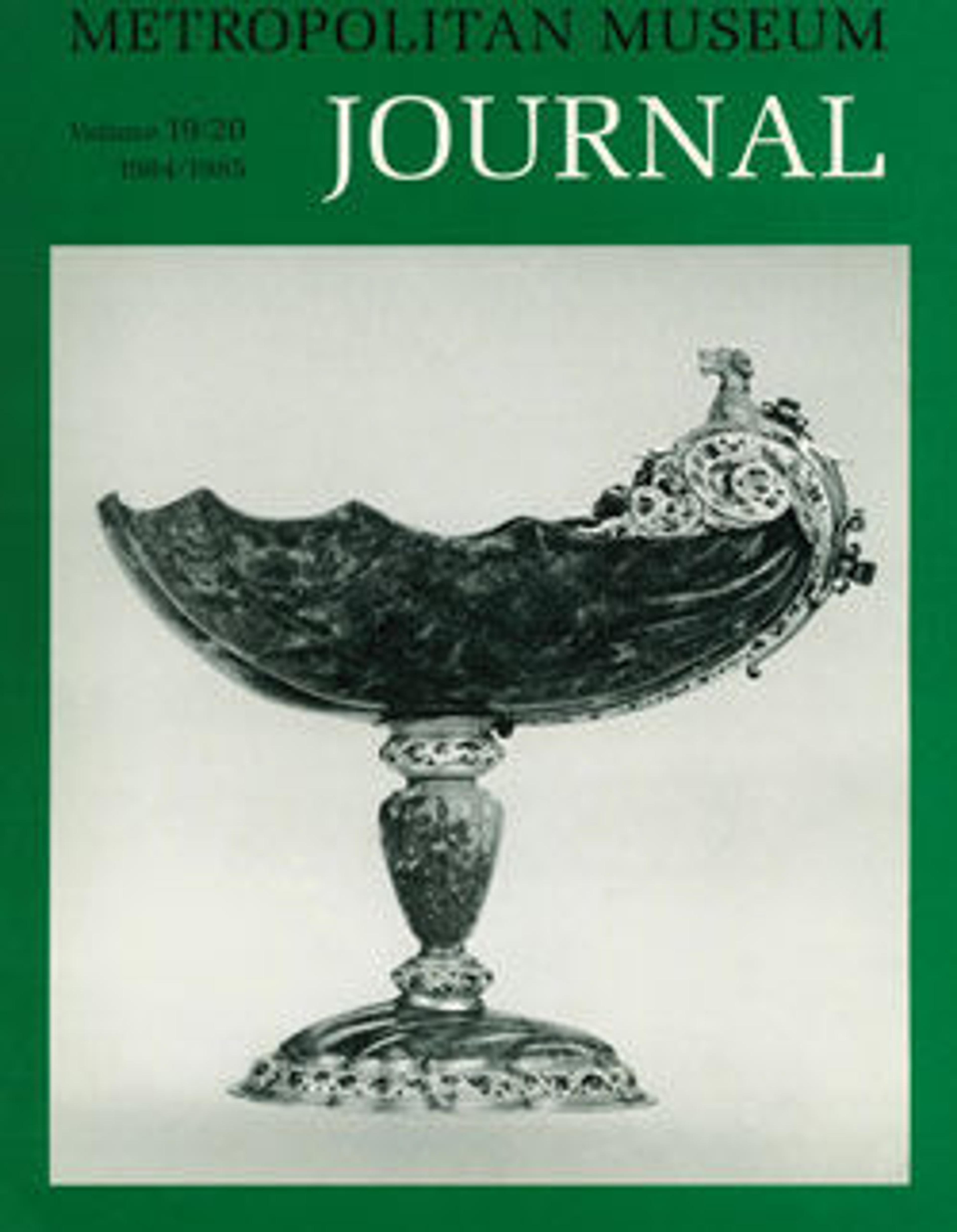Pendant with a Triton Riding a Unicorn-like Sea Creature
With the exception of the links of the chain, an additional molding separating the two bands of decoration on the base, and the unicorn’s horn, this jewel is identical to one in a design in the Victoria and Albert Museum, London (inv. No. E 2818-1919), by Reinhold Vasters of Aachen. The design was included among the nineteenth-century Renaissance-style jewels and jewelry designs in that museum’s exhibition Princely Magnificence: Court Jewels of the Renaissance, 1500–1630. It is illustrated in the exhibition catalogue,[1] where it was noted that the base of a jewel in the same exhibition lent by Lord Astor of Hever was made from the design for the lower part of the base of the jewel in the drawing.[2] The same jewel was illustrated in the catalogue of the collection of Frederick Spitzer, where it was identified as an Italian work of the sixteenth century.[3]
The variation in quality and variety of media found in objects known to have been made from Vasters’s designs indicate that a number of craftsmen were employed in carrying them out. Although many of the designs are accompanied by directions for their execution, and nearly all the directions are written in German, many of the objects made from them were sold by Frederick Spitzer in Paris. Some of them, at least, may have been executed there. It seems possible on the evidence provided by this jewel to question whether all designs were in fact executed under Vasters’s supervision. The creature in the drawing for this jewel is without a horn. Vasters probably intended it to be a hippocampus, but the identity of the finished figure is confused by the addition of the horn to its forehead, and one wonders whether the resulting sea-going unicorn might have been the whim of the goldsmith who executed the design.
[Clare Vincent, The Jack and Belle Linsky Collection in the Metropolitan Museum of Art, New York, 1984, pp. 194–95, no. 114.]
Footnotes:
[1] Princely Magnificence: Court Jewels of the Renaissance, 1500–1630 (exhib. cat.), London, Victoria and Albert Museum, 1980, p. 140, fig. HG4, pp. 139–40, no. HG4.
[2] Ibid., p. 138, fig. H20.
[3] F. Spitzer, La Collection Spitzer: Antiquité, moyen-âge, renaissance, Paris, III (1891), p. 152, no. 56.
The variation in quality and variety of media found in objects known to have been made from Vasters’s designs indicate that a number of craftsmen were employed in carrying them out. Although many of the designs are accompanied by directions for their execution, and nearly all the directions are written in German, many of the objects made from them were sold by Frederick Spitzer in Paris. Some of them, at least, may have been executed there. It seems possible on the evidence provided by this jewel to question whether all designs were in fact executed under Vasters’s supervision. The creature in the drawing for this jewel is without a horn. Vasters probably intended it to be a hippocampus, but the identity of the finished figure is confused by the addition of the horn to its forehead, and one wonders whether the resulting sea-going unicorn might have been the whim of the goldsmith who executed the design.
[Clare Vincent, The Jack and Belle Linsky Collection in the Metropolitan Museum of Art, New York, 1984, pp. 194–95, no. 114.]
Footnotes:
[1] Princely Magnificence: Court Jewels of the Renaissance, 1500–1630 (exhib. cat.), London, Victoria and Albert Museum, 1980, p. 140, fig. HG4, pp. 139–40, no. HG4.
[2] Ibid., p. 138, fig. H20.
[3] F. Spitzer, La Collection Spitzer: Antiquité, moyen-âge, renaissance, Paris, III (1891), p. 152, no. 56.
Artwork Details
- Title:Pendant with a Triton Riding a Unicorn-like Sea Creature
- Designer:Reinhold Vasters (German, Erkelenz 1827–1909 Aachen)
- Date:ca. 1870–95
- Culture:probably German or French
- Medium:Baroque pearl mounted with enameled gold set with pearls, emeralds and rubies and with pendent pearls
- Dimensions:Height: 4 1/2 in. (11.4 cm)
- Classifications:Jewelry, Metalwork-Gold and Platinum
- Credit Line:The Jack and Belle Linsky Collection, 1982
- Object Number:1982.60.382
- Curatorial Department: European Sculpture and Decorative Arts
More Artwork
Research Resources
The Met provides unparalleled resources for research and welcomes an international community of students and scholars. The Met's Open Access API is where creators and researchers can connect to the The Met collection. Open Access data and public domain images are available for unrestricted commercial and noncommercial use without permission or fee.
To request images under copyright and other restrictions, please use this Image Request form.
Feedback
We continue to research and examine historical and cultural context for objects in The Met collection. If you have comments or questions about this object record, please contact us using the form below. The Museum looks forward to receiving your comments.
